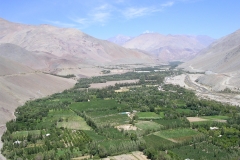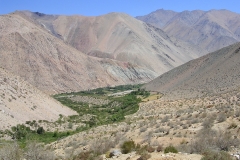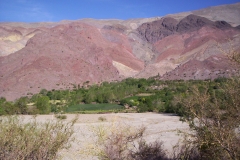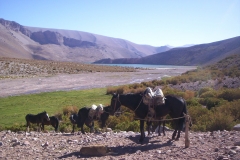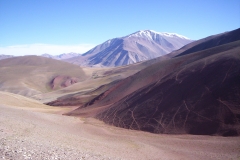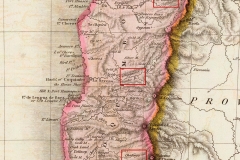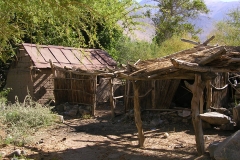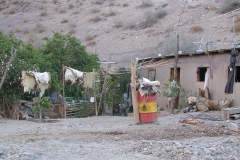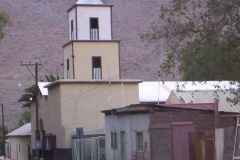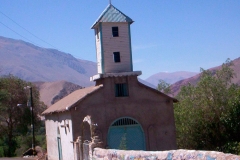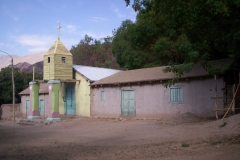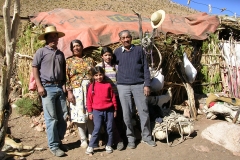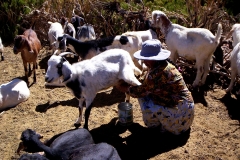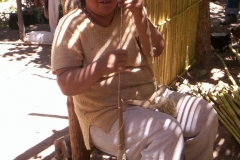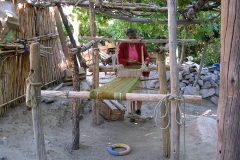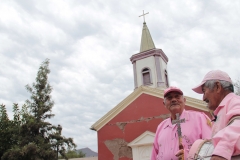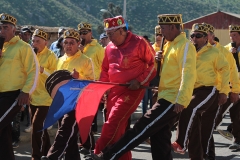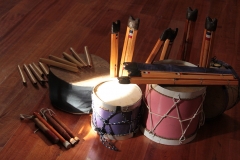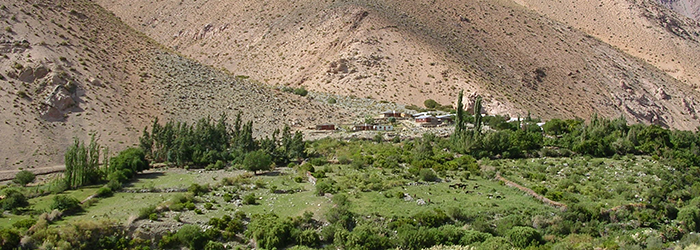Settlement Pattern
The Huasco Diaguitas live in individually held parcels of land grouped together into sectors in the valley, in some cases forming small villages. The hamlets higher up in the Tránsito River Valley are spread over almost 100 kilometers and include, from West to East, Juntas, Ramadillas, La Marquesa, El Olivo, Chihuinto, Las Pircas, Alto Naranjo, Los Perales, Las Pircas, Chanchoquín Grande y Chico, La Fragua, La Arena, La Junta de Pinte, Pinte, La Pampa, La Plata, Los Tambos, Colpe, Conay, Chollay, Malaguín, Los Corrales and Juntas de Valeriano, the last of these at the headwaters of the Tránsito River. These settlements consist of permanent dwellings made of adobe or more modern materials such as brick and cement. Those Diaguitas who live on larger parcels maintain farm fields and orchards alongside their dwellings. Only a few Diaguita families still practice seasonally nomadic herding, journeying from winter to summer grazing grounds with their animals. In the latter they maintain small shelters called majadas built with locally available materials, and consisting of dry stone walls and log-and-branch roofs covered with plastic. The Diaguita settlement of Chalinga is divided entirely into parcels, each families having their dwelling alongside their agricultural fields.


